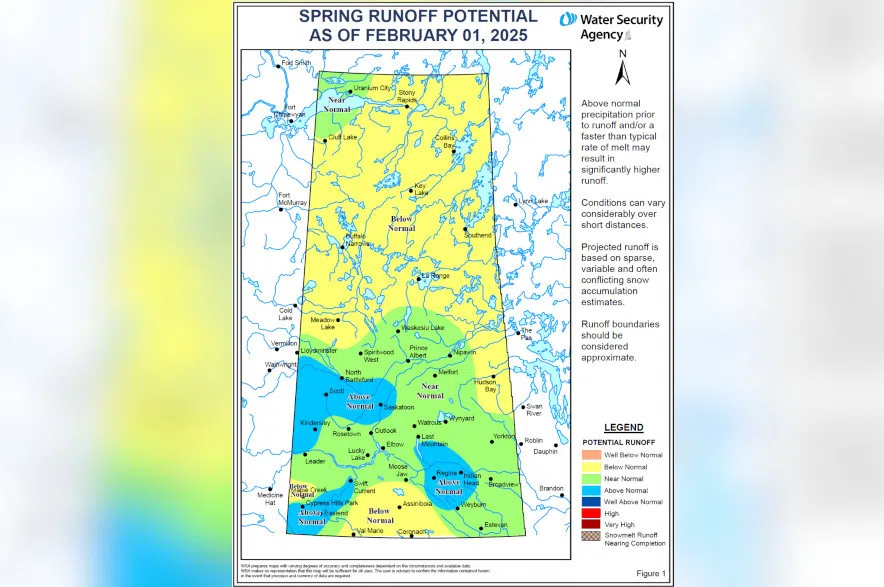Southern Saskatchewan reservoirs appear to be in a good position, but the runoff forecast for this spring varies widely across the province in the Water Security Agency’s preliminary report.
The report, issued on Thursday, explained that precipitation this winter has varied across the province. The report said it ranges from below normal in south-central and northern Saskatchewan to above normal in the province’s southwest and west-central areas.
As a result, the runoff across most of northern, south-central and east-central Saskatchewan is expected to be below normal due to dry fall conditions and below-normal snowpack. The area near Maple Creek in the Bigstick Basin is also expected to see below-normal runoff.
However, in parts of southern and central Saskatchewan the runoff is expected to be above normal because of above-normal snowpack and wetter fall conditions. Those areas include the Cypress Hills and the Swift Current area, Regina down into Weyburn, over to Indian Head and up to Last Mountain Lake, and west-central Saskatchewan from Saskatoon to the Alberta border.
The rest of the province is expected to have near-normal runoff this spring.
Last spring, the agency warned about potential drought-like conditions, saying many areas could see well below normal runoff and face localized water shortages. In this latest report, the Water Security Agency noted conditions were still dry at freeze-up in the fall, but some areas have improved since then.
Most of the major reservoirs in southern Saskatchewan were at or above normal levels as of this report, and are expected to stay that way into the spring. Lake Diefenbaker, which provides 60 per cent of the drinking water in the province, was also at above-normal levels for the time of year.
“In anticipation of potential below normal runoff from the alpine region, WSA has implemented an overwinter operating plan at Lake Diefenbaker that still focuses on retaining water supplies to ensure safe, reliable drinking water for communities and other users,” said Minister Responsible for the Water Security Agency Daryl Harrison, in a news release.
However, the Avonlea reservoir and some in the southwest like McDougald and Harris are below normal levels. Harris and McDougald were among those expected to remain at low levels through last year.
The agency said it expects reservoirs in the Souris Basin to be within normal operating ranges, and all the lakes within the Qu’Appelle River Basin to stay in normal operating ranges as well. Dry conditions in the Churchill River Basin were expected to result in lower flows and lake levels.
The report warned that snowfall through the rest of the winter and how quickly the melt happens in the spring will still have a big impact on runoff.












